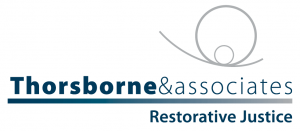
Overcoming Resistance to Whole-School Uptake of Restorative Practices
The implementation of a restorative philosophy demands, in most educational institutions, a major shift in thinking and the realignment (even replacement) of beliefs about discipline, its purpose and practice. Moving from a punitive rule based discipline system to a system underpinned by relational values requires a change in the hearts and minds of practitioners, students, their parents and the wider community. Without understanding the enormity of this task a few good people in each school will be working very hard to make a difference, with limited impact. This paper examines what it takes to help shift the mindsets of people to work more relationally. It scopes the process of whole school change. We draw heavily on the work of Everett Rogers and his Diffusion of Innovation model of change along with other noted scholars in this area to assist schools understand the change process.
The Challenge of Culture Change:
Embedding Restorative Practice in Schools
This paper seeks to broaden the perspectives of senior and middle management and restorative practitioners around what restorative practice in schools can look like; and to present some practical guidelines which represent a strategic approach to the implementationp of restorative practices, so that they stick that is, become sustainable.
It represents a work in progress and the authors encourage readers top engage with them in ongoing dialogue about the issues (we don’t know all the answers yet!) and share with us their butterfly (successes) and bullfrog (failures) stories, in meeting the challenges of developing a restorative culture within schools (Zehr, 2003). It should be noted that there is an overwhelming body of literature (Hargreaves, 1997, Fullan, 2000 etc) dealing with school reform, effective teaching, classroom and behaviour management practice and that this paper focuses on the implementation of restorative practice in schools. We would like to acknowledge the efforts of schools throughout Australia, New Zealand and the United Kingdom that have contributed to the development of a range restorative practices and the body of knowledge about what works and what doesn’t.
School violence and Community Conferencing: The benefits of Restorative Justice
The massacre of students at the Columbine High School in Littleton, Colorado, and copycat shootings in other US and Canadian schools have sent waves of alarm through school communities across the globe. While tough gun laws limit accessibility to the type of weapons used in those crimes here in Australia, school violence is increasingly a source of anxiety. There is no argument from this author that there is much to be done beyond the school gates to counter this harmful behaviour, and at the earliest point of intervention in the lives of our young people. Responding to such incidents in schools, though, is always a challenge. School responses to incidents of violence (including bullying), typically range from police involvement, suspension and/or exclusion, detention, to parent interviews, counselling and anger management programs. Community conferencing, first introduced to Queensland schools in 1994, is an extremely effective process for dealing with incidents of violence. Various models of conferencing are currently used in a range of jurisdictions such as police, justice, corrections, education and welfare across Australia, New Zealand, Canada, USA, UK, Europe and South Africa. This paper will briefly review the history of conferencing in Queensland schools and examine the reasons why the process is effective for dealing with such incidents . It will argue that the application of restorative justice processes at all levels in the school community for all matters offers hope for reducing the chance of such horrific trauma as the Littleton massacre happening here.
Restorative Justice and School Discipline: Mutually Exclusive?
A practitioner’s view of the impact of Community Conferencing in Queensland schools
In April 1994, the first school-based Community Conference in Queensland was conducted at Maroochydore State High School in an attempt to repair the harm of a serious assault after a school dance. The demand for conference facilitator training which emerged as word spread in the education community, clearly indicated that this process answered some urgent need within schools for an entirely different approach for dealing with such harmful incidents.
This paper will outline briefly the results of two separate studies conducted by Education Queensland involving the introduction of Community Conferencing into schools to deal with incidents of serious harm, as an additional tool in a broad spectrum of strategies which also included suspension and exclusion.
Experiences during the two years in which these studies were conducted have highlighted a range of implementation issues which have exposed tensions between existing philosophies and practices in managing behaviour and restorative interventions such as conferencing. The incorporation of the restorative justice approach via conferencing while in itself a very useful addition, had limited potential because of these tensions.
The theory, philosophy and practice of conferencing has demonstrated to practitioners the value of and necessity for a restorative philosophy in all aspects of school discipline by a) providing opportunities for insight and learning when behaviour is deemed unacceptable, b)providing opportunities for dialogue and reflection when behaviour threatens the social cohesion of the school community and c)identifying issues of harm to relationships and how to “make things right” through strengthening relationships. Education theory clearly articulates the importance of healthy relationships between all members of the school community to discipline and pedagogy. Restorative justice has much to offer in this respect.
Community Conferencing: Responding to the Challenge of Drug Related Incidents in Schools and Community Settings
This paper will examine a range of issues surrounding the official responses by schools and other communities to incidents involving drugs and youth. Such issues include the damage to the emotional and social bonds within schools, families and their respective communities and the trauma that occurs in the wake of these incidents. Official sanctions to such incidents which often produce highly emotional reactions are sometimes less than helpful and create more damage and trauma. Neither do they produce the learnings for those affected (including the “offender”) for which they are supposedly conceived. What also needs to be addressed in our responses is the harm to those young people and to their relationships with the significant people in their lives.
Beyond Punishment – Workplace Conferencing
An effective organisational response to incidents of workplace bullying
More and more organisations have policies and procedures to deal with difficult situations such as workplace bullying. While they may appear to be procedurally fair, rarely are they able to deal effectively with the emotional impact of the harmful behaviour and its aftermath. The Workplace Conference is a process designed to bring together those most affected by this destructive behaviour to come to some agreement about how repair the harm and how to go forward. This innovative approach to transforming conflict has its origins in the justice system as a means for dealing more effectively with offending behaviour and its impact on victims. It has been used more recently, and with great success, across a wide range of industries, government and non-government sectors, and large and small businesses. This paper will examine the philosophy, practice and theory of this extremely effective process.


